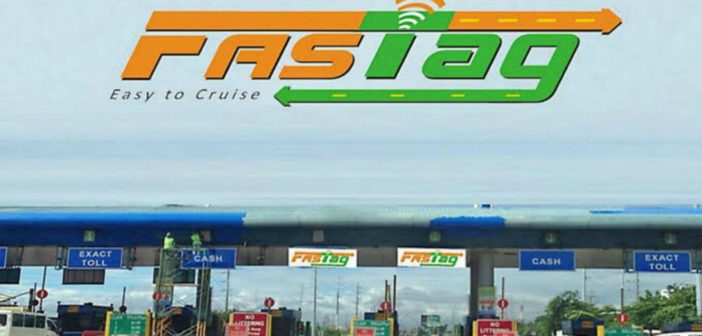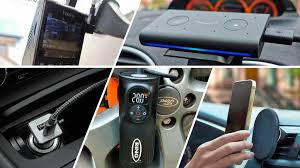There’s no denying that the world is moving towards digital horizons. India is no exception to this, with many technological advancements that seek to improve the quality of life for Indian citizens. Among the significant advancements since 2016 include the introduction of Unified Payment Interface (UPI) services, to streamline payments through digital portals. Every major service in India is jumping on the online application bandwagon, looking to attract more of their clients. Step by step, India is slowly moving towards a smoother user experience through the endless possibilities of the digital world. One such aspect of digital infrastructure is the concept of FASTag, and it is set to revolutionize travel on Indian roads and highways.
What is FASTag?
Though FASTag has been around for a while now, most of you might not have heard of it. Indeed, unless you own a car and drive intercity often, the only place you might have noticed FASTag is as a sticker on your cab ride. So what exactly is this quirkily-worded concept?
It’s exactly what the name says. FASTag is the name assigned to the Electronic Toll Collection on National Highways by the NHAI. In layman’s terms, FASTag is a new-age tag that is fitted onto cars that looks to speed up the process of passing through toll gates on highways. The principle is quite simple, but the benefits are actually manifold!
What’s the biggest gripe people have when approaching a tollbooth? The seemingly endless queue that forms before each counter. With FASTag, all that is a thing of the past. You cross a tollbooth with no interruption, and the digital world takes care of the rest. Within a short period of its implementation, FASTag has proven to be quite the hit amongst Indian drivers. Let’s dive deeper into the working idea of it.

The Working Principle
As far as the tag part of FASTag is concerned, it uses what we know as RFID technology. Your vehicle is fitted with a specific Radio Frequency Identification Tag that is unique to it. The tag is visibly placed on your car on the windscreen, and to external appearance, it looks like a regular sticker.
Once the RFID tag has been assigned to your car, you will be required to set up your bank account and link it to the FASTag, creating an account in the process. Once successfully linked, think of your FASTag as a PayTM wallet of sorts. You have to periodically keep recharging through online payment, so that it may be deducted as and when you pass by a toll plaza.
Getting your FASTag set up requires you to approach an authorized PoS location, or at a registered Toll Plaza itself. Aside from the signup fee of ₹200, you’ll also need to furnish your documents and proof of ID as stipulated. From there on, your service provider will walk you through the whole process of FASTag activation.
Tolls Made Simple
Having a FASTag can make the difference between a streamlined and a strenuous commute. With the tag equipped, all you have to do when approaching a toll plaza is to get into the designated FASTag lane, and drive by. It’s as simple as that! The scanner at the plaza will scan your car’s tag and bill you accordingly.
- There’s no printed receipt. You receive an SMS instead.
- There’s no need to wait in queues. It’s a drive-through.
- The process is almost instantaneous.
These three points above illustrate FASTag’s vast potential clearly. This truly is an ingenious system that can make life a lot easier while traversing our big country by road.

FASTag: Vital Service
Right from the working principle itself, it’s crystal clear as to why FASTag is an important step in the right direction for Indian roadways. Currently, there are more than 250 dedicated FASTag toll plazas spread across the country. This network brings with it a world of benefits, in more ways than one.
– It’s environment-friendly. No need for any receipts to be printed means we save a lot on paper, doing our bit for the environment! You also don’t have to hold on to those tiny receipts for further use.
– Payment is easy. You can top-up your FASTag account through digital payments, including NEFT/RTGS, anywhere, anytime. The minimum balance to do so is ₹100. If you keep your account regularly updated, you won’t have to bother with carrying change for the ticket!
– It’s universal. FASTag is redeemable for a wide range of vehicles, from light cars to large trucks. This helps bring the country’s highway traffic under a unified system in terms of road tax.
– Travel time is reduced. Think of how much time you can save on by not having to wait endlessly in tollbooth queues. You’ll get where you need to go much faster, with FASTag.
– Dedicated infrastructure. This plan has been implemented with everything accountable in place. From SMS alerts to Online Portal access, you can check up on your FASTag account in multiple ways.
– Better management. With FASTag in place, the NHAI can monitor the highway traffic statistics much easier, and assess the analytics in a much more streamlined fashion. It also reduces the need for staffing at toll booths!
As you can see, FASTag brings with it complete benefit, both for the drivers as well as the authorities. The program is slowly but surely expanding to encompass all of the nation’s major roads and highways. On the client end, more and more people are signing up for FASTag, after being awakened to the benefits. The addition of services such as Monthly Passes and Local Passes with FASTag have worked towards including a wider demographic in this program. FASTag’s customer care is also prompt in response, encouraging more people to sign up for it.

Conclusion
After assessing the pros and plus points of the FASTag scheme, it is evident that it has been a vital initiative by the Government, with fruitful results. Currently, FASTag is not mandatory in the country. However, signs show that it may become mandatory in the future, in the interest of opening new roads for Indian travellers!
10




